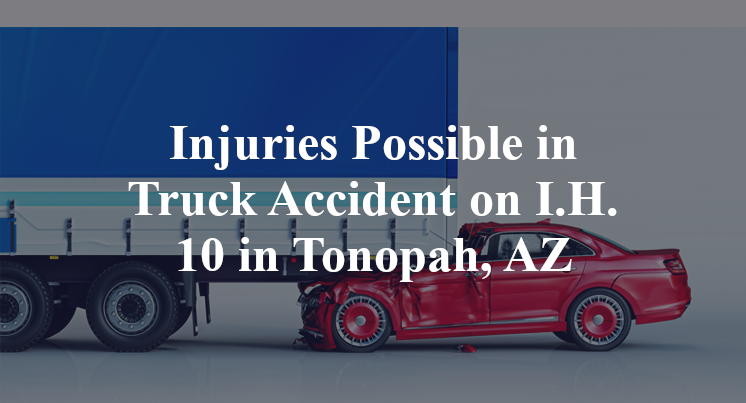Injuries Possible in Truck Accident on I.H. 10 in Tonopah, AZ
Tonopah, AZ — April 11, 2025, injuries are possible in a truck accident at approximately 7:45 a.m. along Interstate Highway 10.
According to authorities, the accident took place in the westbound lanes of I.H. 10 in the vicinity southeast of Wintersburg Road.

The cause of the accident remains unclear. Officials indicate that, for as yet unknown reasons, a collision took place between the front-end of a sedan and the rear-end of an 18-wheeler's trailer. The sedan reportedly became wedged beneath the end of the trailer.
Reports state that the person who had been behind the wheel of the sedan became entrapped in the wreckage and had to be extricated by emergency personnel; it is possible that they were injured as a result of the wreck, but reports are unclear. Additional details pertaining to this incident are not available at this point in time. The investigation is currently ongoing.
Commentary
In my experience, when a passenger vehicle becomes lodged underneath the rear of an 18-wheeler’s trailer, it often signals a failure in visibility, equipment, or both—failures that are far too common and, in many cases, preventable. Rear-end collisions like this aren’t just about a driver misjudging distance. They’re about whether the vehicle ahead gave them a fair chance to react and avoid disaster.
One of the most important issues in a crash like this is whether the trailer was equipped with functioning rear lighting and reflective tape. Federal regulations require these features for a reason: to make trailers visible at a distance, especially in early morning hours when lighting can be inconsistent. But I’ve handled cases where the reflectors were faded, the brake lights weren’t working, or the trailer itself was so coated with dirt or debris that it blended into the background. In those situations, even a careful driver may have little warning until it’s too late.
Another critical concern is the presence—or absence—of an underride guard. These steel bars installed beneath the rear of a trailer are designed to stop vehicles from sliding underneath in a rear-end collision. They’ve been proven to save lives, but not all trailers are equipped with them, and some that do have them aren’t maintained well enough to function properly. If the sedan became wedged under the trailer, as reported, investigators should be asking whether an underride guard was present—and if not, why not.
It’s also worth questioning the behavior of the truck prior to the crash. Was the vehicle moving at a consistent speed? Had it just entered the highway or come to a sudden stop? Was it partially in the lane or parked improperly on the shoulder? These aren’t hypothetical details—they go directly to whether the driver of the sedan had a realistic chance to avoid the crash.
If the truck was operating under a commercial carrier, the company’s role has to be part of the investigation. Were they inspecting the trailer regularly? Did they maintain lighting and safety features properly? Was the driver trained and monitored to ensure they were operating safely in mixed-traffic conditions? These are the behind-the-scenes factors that, when overlooked, often contribute to outcomes like this one.
From where I sit, when a vehicle ends up beneath the rear of an 18-wheeler, it raises serious concerns that deserve thorough investigation. It may be the result of a momentary lapse, but it could also point to failures in visibility, equipment, or operational oversight. Without looking into those factors—lighting, underride protection, driver behavior, and maintenance practices—there’s no way to fully understand what happened. That’s why it’s so important to ask the right questions early and follow the evidence wherever it leads. Only then can the right parties be held accountable and those affected by the wreck receive the clarity and closure they deserve.

“These are essential reads for anyone dealing with the aftermath of a truck wreck”– Attorney Cory Carlson